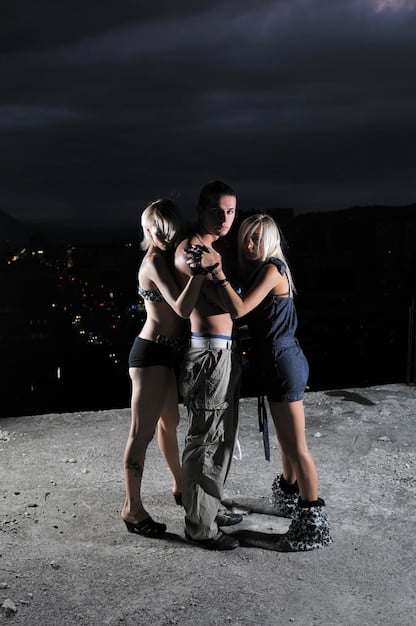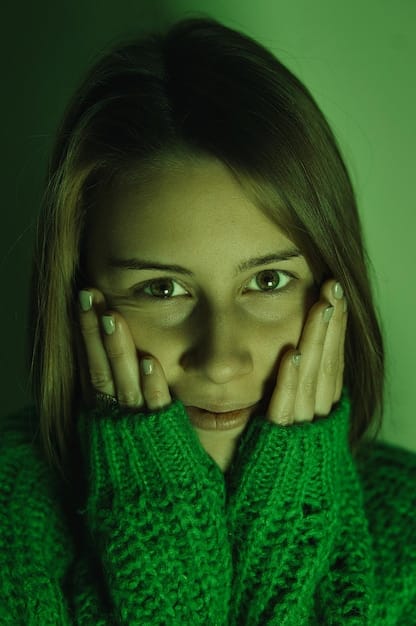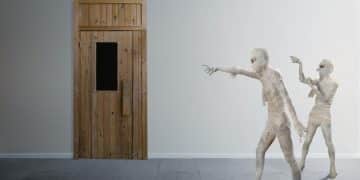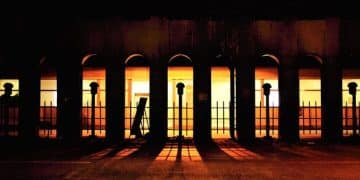The Curse Season 1 Finale: A Deep Dive and Ending Explained

The Curse, a blend of dark comedy and social satire, concludes its first season with a finale that leaves viewers grappling with unresolved tensions, ambiguous fates, and the unsettling consequences of performative activism and unchecked ambition.
The season finale of The Curse has left audiences reeling, questioning the characters’ motivations and the very nature of reality presented in the show. Let’s dive into the intricate details of the ending and unpack its many layers.
Unraveling the Siegel’s Spiral: A Recap of “The Curse” Finale
The ending of “The Curse” season 1 is nothing short of shocking, pushing Asher, Whitney, and Dougie into uncharted emotional and psychological territory. The episode masterfully escalates the tension built throughout the season, concluding with a series of events that are both bizarre and deeply disturbing.
From uncomfortable social dynamics to accusations of cultural appropriation, the season finale lays bare the consequences of the characters’ actions. This unsettling conclusion showcases the lengths to which these individuals are willing to go in pursuit of their warped version of the American dream, leaving viewers to question whether any of them are capable of redemption.

Asher’s Descent: A Breakdown of the Finale’s Key Moments
Asher’s character arc reaches its apex in the finale, encapsulating the themes of fragility, desperation, and the ever-blurring lines between reality and performance. The climactic moments involving Asher are both shocking and deeply symbolic, urging audience members to wonder about the nature of his demise.
The Unbearable Lightness of Asher
Asher’s long-held desire for recognition and validation implodes spectacularly as his carefully constructed image is obliterated, leaving him exposed and vulnerable. His desperate pleas serve as a heartbreaking commentary on the vacuity of superficial success.
The Curse Manifests
The curse, which was once just an undercurrent of unease, surfaces with terrifying force, underscoring the destructive impact of unacknowledged guilt and unchecked ambition. The true nature of the curse might be more intrinsic than supernatural, representing the inescapable consequences of their deeds.
- The finale shows Asher’s mental instability.
- Asher makes a shocking and horrifying discovery.
- Asher’s fate is left open to interpretation.
Ultimately, the finale of “The Curse” provides a powerful commentary on the human condition, exploring how we can become trapped by our own desires and fall victim to the very forces that drive us. The shocking episode leaves viewers to consider what constitutes reality and how we perceive the world around us.
Whitney’s World: Ambition and Moral Compromise
Whitney, played with chilling precision, embodies the complex interplay between outward altruism and self-serving ambition. Throughout the season, she has navigated the fraught terrain of ethical consumerism and community engagement, but the season finale highlights the inherent contradictions and moral compromises that define her.
Her fixation on appearances collides spectacularly with the growing ethical quagmire, leading to moments of brutal honesty and self-revelation. Whitney, caught between the trappings of social status and authenticity, exposes the fine line between sincere intent and self-aggrandizement.

The Illusion of Progress
Whitney’s vision of eco-friendly housing and community uplift gradually metamorphoses into a symbol of cultural insensitivity and the imposition of personal ideology. The finale serves as a stinging comment on the disconnect between intention and effect, showcasing the harm that can be inflicted even with the noblest of goals.
Whitney’s Descent and Revelation
As the walls close in, Whitney’s facade begins to crumble, revealing the deep-seated insecurities and anxieties that have been simmering beneath the surface. The finale unveils her vulnerabilities and moral ambiguities, posing difficult questions about what she truly values and how she copes with impending failure.
- Whitney exhibits questionable behavior.
- Whitney deals with the repercussions of Asher’s actions.
- The episode raises questions about Whitney’s true intentions.
In the end, Whitney’s storyline culminates in a stark assessment of her choices, leaving viewers to reflect on the compromises inherent in pursuing personal aspirations while attempting to do “good.” Her struggle underscores the complex dynamics between ambition, morality, and the pervasive urge for self-validation.
Dougie’s Downward Spiral: Addiction and Reckless Pursuits
Dougie, the seemingly hapless producer, represents the insidious influence of addiction and the desperate quest for fleeting relevance. Throughout the season, his manic energy and questionable decisions have added an edgy unpredictability to the narrative. However, in the finale, his actions explode into a dangerous crescendo of chaos.
The Pursuit of Catharsis
Dougie’s dependence on documenting and profiting from others’ misfortune underscores the voyeuristic element of reality television and the blurred ethical boundaries it often traverses. His reckless behavior leads to unforeseen outcomes that expose the moral bankruptcy at the heart of the industry.
Accusations Fly
As Dougie’s personal struggles spiral further out of control, the question of accountability becomes increasingly urgent. The finale forces viewers to confront the extent to which Dougie’s addiction and irresponsibility have contributed to the escalating crisis.
Dougie’s tale implores the audience to consider the lasting ramifications of their actions and the importance of personal responsibility. His character serves as a powerful caution about the lure of self-destruction and the ethical tightropes walked.
The Audience and Accountability: Who’s Really Watching?
“The Curse” positions the audience as both spectators and accomplices, blurring the line between entertainment and complicity. By implicating the viewer in the unfolding drama, the show challenges us to confront our role in perpetuating superficiality and rewarding morally questionable behavior.
The Voyeuristic Gaze
The show invites critical examination of the ethical gray areas inherent to reality television and the media’s obsession with exploiting personal suffering for entertainment value. The dynamic raises profound questions about the ethics of viewership and the role of media consumption.
The Echo Chamber of Judgment
The finale leaves the audience to make their own judgments about the characters. This echoes the themes brought forth by their actions.
- The lines between reality and performance become indistinguishable.
- The characters’ actions have real-world consequences.
- The show challenges viewers to confront their own biases.
Ultimately, “The Curse” serves as a stark reminder of the responsibilities that come with being an audience, urging us to critically examine the media we consume. The series makes viewers consider their behaviors and consumption.
Hidden Symbolism: Analyzing Visual and Symbolic Elements
Throughout the season, “The Curse” has cleverly employed visual and symbolic elements to enrich the narrative and enhance its themes. In the finale, these motifs reach their dramatic apex, serving as potent reminders of the underlying anxieties and moral compromises that drive the characters.
Mirrors and Reflections
Mirrors and reflections feature prominently in the episode, symbolizing the characters’ distorted self-perceptions and their constant struggle to construct and maintain a desired image. These visual cues highlight the fragility of their identities.
The Color Palette
The show’s distinctive color palette adds layers of meaning, with the sterile, artificial tones of the Siegels’ eco-friendly home contrasting sharply with the natural landscapes of Española. This dichotomy emphasizes the tension between artifice and authenticity.
- The minimalist architecture reflects the characters’ emotional emptiness.
- Environmental themes underscore the consequences of unchecked ambition.
- The show’s dreamlike quality challenges the line between reality.
Through its masterful use of symbolism, “The Curse” invites viewers to delve beneath the surface narrative and explore the deeper psychological and moral dimensions. The visual components underscore the series’ thematic richness, urging us to ponder the complex interplay between appearance and reality.
Future Trajectories: Speculating on Season 2 of “The Curse”
The finale of “The Curse” leaves many questions unanswered, creating ample ground for speculation regarding the direction of future seasons. With the characters’ fates hanging in the balance and their moral trajectories uncertain, the possibilities for further exploration are vast and intriguing.
Unresolved Relationships
The status of the relationships between Asher, Whitney, and Dougie remains ambiguous, leaving viewers wondering if the characters can ever reconcile their differences or break free from the destructive web they have created. How these bonds evolve will be central to any future narrative.
The Lingering “Curse”
The nature and implications of the “curse” itself warrant continued inquiry. Whether it is a supernatural force or a metaphor for the consequences of moral choices, unpacking this element could reveal far more about the characters’ inner demons. The ending leaves viewers intrigued.
While there is no certainty of a second season, the finale’s open-ended conclusion guarantees that the series will continue to spark conversation and debate among audiences. Its themes of ambition, guilt, and morality ensures its relevance.
| Key Point | Brief Description |
|---|---|
| 😲 Asher’s Fate | Asher’s shocking ending leaves his fate ambiguous and viewers stunned. |
| 💔 Whitney’s Ambitions | Whitney’s pursuit of success exposes contradictions and compromises |
| 🎬 Dougie’s Spiral | Dougie’s struggles intensify, showcasing the destructive nature of addiction. |
| 🤔 The Curse | The origins and impacts of the curse remain a central mystery. |
Frequently Asked Questions
▼
Asher’s bizarre ascent and inability to descend suggest a manifestation of the “curse,” exacerbated by his own anxieties and guilt. This prompts interpretation and debate among viewers.
▼
Whitney’s relentless focus on appearances and her willingness to bypass ethical considerations raise serious questions about her involvement and understanding of their situation.
▼
Dougie’s addiction amplifies the ethical challenges and consequences and highlights media exploitation while also raising the moral conflicts that occur.
▼
The answer for this question is left deliberately unclear, allowing for multiple interpretations tied to guilt or consequences, and this adds depth to the viewer’s perception.
▼
Should it return, the show will likely delve more deeply into characters, themes and relationships while still generating thought and debate for viewers to follow through with.
Conclusion
The finale of The Curse delivers a potent mix of dark comedy and social commentary, challenging viewers to confront uncomfortable truths about ambition, morality, and the performative nature of contemporary life. As the characters grapple with the fallout of their decisions, the series leaves a lasting impression, prompting reflection on the ethical complexities.





